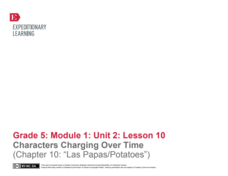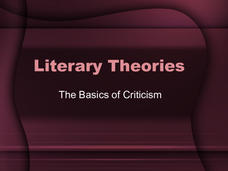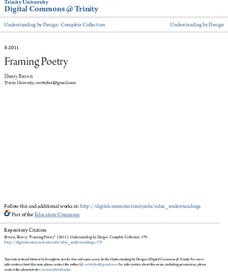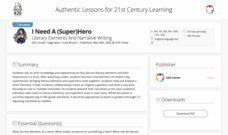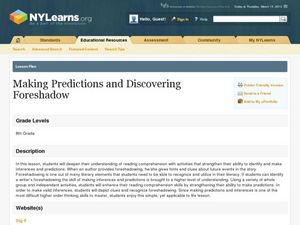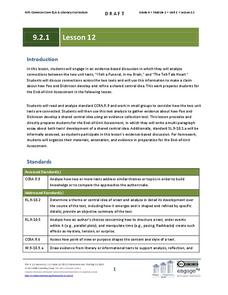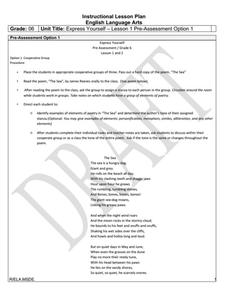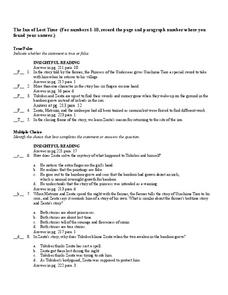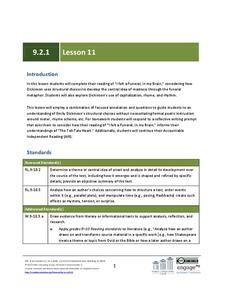EngageNY
Characters Changing Over Time (Chapter 10: "Las Papas/Potatos")
Engage further in Esperanza Rising with a focus on close reading and metaphor. Class members zero in on the tenth chapter, examining characters and big ideas. Pupils discuss the text in small groups and as a whole class, and...
National Endowment for the Arts
Teacher's Guide: The Great Gatsby by F. Scott Fitzgerald
A 10-lesson unit takes high schoolers through a novel study of F. Scott Fitzgerald's The Great Gatsby. To start, students learn about Fitzgerald's background and gain historical context that prepares them for a reading of the book. The...
Penguin Books
A Teacher's Guide to the Signet Classic Edition of William Shakespeare's Julius Caesar
Are the lessons of Shakespeare's Julius Caesar still applicable today? Explore themes, characterization, and plot structure with a thorough teacher's guide to the play. The resource covers the entire text and offers rigorous activities...
PBS
Using Video to Create Setting and Mood
Writers have long used words, the sound of words, and the images created by their words to describe the setting and establish the mood of their stories. To gain a more in depth understanding of how settings can be used to develop a...
Livaudais-Baker English Classroom
Literary Theories
Introduce ELA scholars to the basics of literary criticism with a 41-slide presentation that identifies eight different approaches to critical analysis. Each approach is defined, and advantages and disadvantages are listed. Also included...
National Endowment for the Humanities
García Márquez’s Nobel Prize Speech: “The Solitude of Latin America”
To conclude a study of One Hundred Years of Solitude, class members analyze Gabriel Garcia Marquez's Nobel Prize in Literature acceptance speech. After a whole-class discussion of the main ideas in the speech, individuals draft a...
Trinity University
Framing Poetry
The big idea in this poetry unit plan is that structure and content work together to create meaning. Class members learn how to identify and mark the metrical patterns and line lengths used in poems. They study the structure of various...
K20 LEARN
I Need A (Super)Hero: Literary Elements And Narrative Writing
Need a hero? Super! Groups create their modern-day marvel and craft a narrative with all the elements required in such a tale.
Curated OER
Camels Theme Unit
In this Camel themed instructional activity, learners create an alliteration, an acrostic poem, and work with similes. The unit consist of three pages of language arts work, based on Camels.
Curated OER
A Modest Proposal: Irony Made Understandable with Rock and Roll
Who doesn't love music? Poems and songs will engage your high school class in a discussion about irony. Use songs like "Rockin' in the Free World" or "Born in the U.S.A." to illustrate the ironic point of view. Print the lyrics so...
Curated OER
Identifying Personification in Poetry
Improve your young poets' descriptive writing with this lesson on personification. A SMART board and PowerPoint presentation guide your class through the process of identifying human qualities attributed to various non-human objects. A...
Curated OER
Foreshadowing and Making Predictions
"What happens next?" Using real-life scenarios, movies, images, and other prompts, pupils practice making predictions based on inferences from clues. A SMART board activity takes them from making predictions to writing a prediction...
Curated OER
Cartoons for the Classroom: Sarcasm, Irony, and Satire
Satire, sarcasm, or irony? Editorial cartoons have long been the tool artists use to express their opinions about politics and politicians. Kevin "Kai" Kallaugher's four-panel cartoon offers readers an opportunity to examine how he uses...
Curated OER
Symbolism
Start your language arts lesson with this quick PowerPoint that defines symbolism. Following the definition is a sentence describing the American flag as a symbol to the United States. Tip: After reading these slides, have students write...
Curated OER
Allusion and Illusion: Definitions and Examples
Illusions and allusions certainly sound similar but there is a world of difference in their meanings. The narrator of this short video distinguishes between these terms, defines them, and offers examples that are sure to engage viewers....
EngageNY
Grade 9 ELA Module 2: Unit 1, Lesson 12
What happens when a tenuous grasp on sanity begins to slip? Compare Edgar Allan Poe's "The Tell-Tale Heart" and Emily Dickinson's "I Felt a Funeral, in my Brain" with a lesson plan focused on developing a common central idea. High...
Curated OER
"World enough, and time"-Andrew Marvell's Coy Mistress
Discuss tone and imagery with Andrew Marvell's "To His Coy Mistress." In an attempt to get his fair lady to consummate their relationship, he write a poem urging her to seize the day! Introduce the author to your high school class,...
Curated OER
Creating Civic Awareness Through Artistic and Literary Forms
Interpret current events using editorial cartoons and other print media. Middle schoolers explore the meanings of literary and artistic terms such as satire, irony, and caricature. They visit internet sites to develop an understanding of...
Perfection Learning
Of Mice and Men by John Steinbeck: Clouds on the Horizon--Foreshadowing
The seeds of tragedy are planted early in John Steinbeck's story of migrant workers George Milton and Lenny Small. Nurture the imagination of readers by asking them to craft predictions about what will grow out of events in chapters one...
Curated OER
Express Yourself Pre Assessment Lesson 1 & 2
Find out how much your class knows about literary elements with a quick pre-assessment. Pupils work first individually to identify the instances of personification, metaphor, simile, and more, and then with group members to...
Wordpress
The Inn of Lost Time
Test understanding of "The Inn of Lost Time" by Lensey Namoika with an assessment that includes true/false, multiple choice, vocabulary, short answer, and essay questions. The test is not entirely traditional since, for the first 10...
Curated OER
My Antonia: Concept Analysis
Use this analysis of My Antonia to help inform your instruction and prepare your pupils for the project and enrichment ideas listed at the end of the resource. The analysis covers big questions related to the text, themes, plot elements,...
EngageNY
Grade 9 ELA Module 2: Unit 1, Lesson 11
The capitalization rules are strict and inflexible—until you experience the fluid beauty of an Emily Dickinson poem. Ninth graders test their existing knowledge of language arts conventions with the many bent grammar rules in "I Felt a...
College Board
Choices and Consequences
Paul Fisher, the main character in Tangerine, comes to see that it's the choices in life that lead to the consequences that make all the difference. A unit study of Bloor's young adult novel leads readers down this same path.
Other popular searches
- Teaching Literary Devices
- Literary Devices and Terms
- Literary Devices & Quotes
- Common Literary Devices
- Literary Devices and Reading
- Introducing Literary Devices
- Literary Devices Irony
- Glossary of Literary Devices
- Literary Devices Inkheart
- Literary Devices Music
- Literary Device Flashback
- Ell Literary Device Activity


